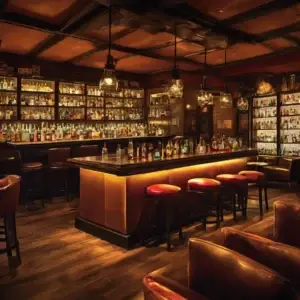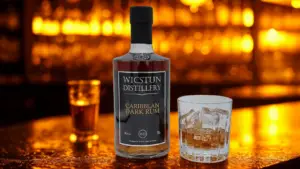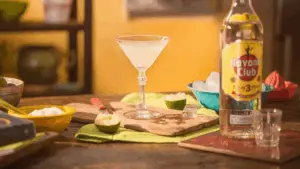For newcomers to Scotch whisky, the label on a bottle can feel like a code written in oak and copper. Numbers, regions, cask details, and cryptic markings fill the glass, yet every element reveals a part of the whisky’s identity. Understanding these details transforms confusion into knowledge, turning each label into a story of geography, craftsmanship, and time.
Age Statements
The age statement is often the most visible feature on a Scotch label. When a whisky reads “12 Years Old,” it means every drop has matured in oak casks for at least twelve years, as required by the Scotch Whisky Regulations of 2009. Time in cask allows the spirit to interact with oak and air, developing depth and balance. A Lagavulin 16 Year Old reveals dark richness from long sherry cask aging, while an Ardbeg 5 Wee Beastie offers youthful peat and raw coastal power. Both show that age influences character but does not decide quality. The mastery lies in how the distiller shapes time, not simply in how many years pass.
Regional Identity
Scotland has five officially recognized whisky-producing regions: Highlands, Lowlands, Speyside, Islay, and Campbeltown. Each region has a distinct personality born of geography and tradition. Speyside, home to Glenfiddich, Macallan, and Glenlivet, expresses soft fruit and honeyed warmth. The Highlands present a wide spectrum, from the coastal salt of Clynelish to the heather sweetness of Dalmore. Islay delivers smoky, sea-driven intensity from distilleries such as Laphroaig, Ardbeg, and Lagavulin. Lowland malts, like Auchentoshan, tend to be lighter and floral, while Campbeltown, once crowded with producers, now counts only Springbank, Glengyle, and Glen Scotia, known for their oily maritime depth. Recognizing a region gives the drinker a preview of flavor before the cork is drawn.
Distillery Codes and Independent Bottlers
Most bottles proudly display the distillery name, but independent bottlers often use numerical codes to identify the source of their whisky. The Scotch Malt Whisky Society (SMWS) established this system. Each code follows two numbers separated by a period — the first number identifies the distillery, and the second marks the specific cask released. Examples include 1.235 (Glenfarclas), 3.317 (Bowmore), 24.139 (Macallan), 33.140 (Ardbeg), and 64.5 (Mannochmore). These numbers preserve discretion while inviting enthusiasts to decode the whisky’s true origin. Other bottlers such as Gordon & MacPhail, Cadenhead’s, and Douglas Laing list the distillery name directly but emphasize single cask authenticity. Reading these codes and labels allows collectors to trace a whisky’s journey from still to bottle.
Influence of Cask Types
Casks shape a whisky’s flavor, color, and complexity. Labels often highlight whether the spirit matured in bourbon barrels, sherry butts, or wine casks. American oak ex-bourbon casks contribute vanilla, coconut, and caramel, while European oak sherry casks bring dried fruit, nut, and spice. Distilleries such as GlenDronach and Aberlour are admired for their deep sherried richness, while Glenmorangie pioneered cask finishing by transferring mature whisky into port, Madeira, or Sauternes casks. Modern releases like Balvenie Caribbean Cask and Glenfiddich Fire & Cane proudly name their finishing barrels as part of their identity. Understanding these details gives drinkers a window into the flavor story written in wood.
Bottling Details
Beyond age and cask type, a whisky label contains essential technical information that describes how it was made. Single Malt Scotch Whisky signifies whisky made at a single distillery using only malted barley and pot stills. Blended Scotch combines malt and grain whiskies from multiple distilleries to achieve balance. Cask Strength or Barrel Proof means the whisky was bottled without dilution, preserving full natural intensity. Non Chill Filtered retains oils that add body and texture, and Natural Color assures that no artificial coloring was added. A Single Cask bottling means every bottle in that release came from one unique barrel, an expression that can never be exactly repeated. These designations help whisky lovers identify purity, production style, and transparency at a glance.
Unlocking the Story
Once these codes and terms are understood, the mystery fades. Each bottle tells a clear story. The age reveals the time the whisky has rested in oak. The region hints at the natural influences of land and climate. The cask type speaks of the wood’s impact on aroma and flavor. The bottling terms indicate how faithfully the whisky was presented. Even a modest 10 Years Old or a cryptic 3.317 carries a history waiting to be explored. For the Barlist community, reading a Scotch whisky label is an initiation into the deeper craft of the spirit. Each bottle becomes a narrative of place and patience, a quiet dialogue between wood, time, and tradition that rewards those who take the time to understand it.


